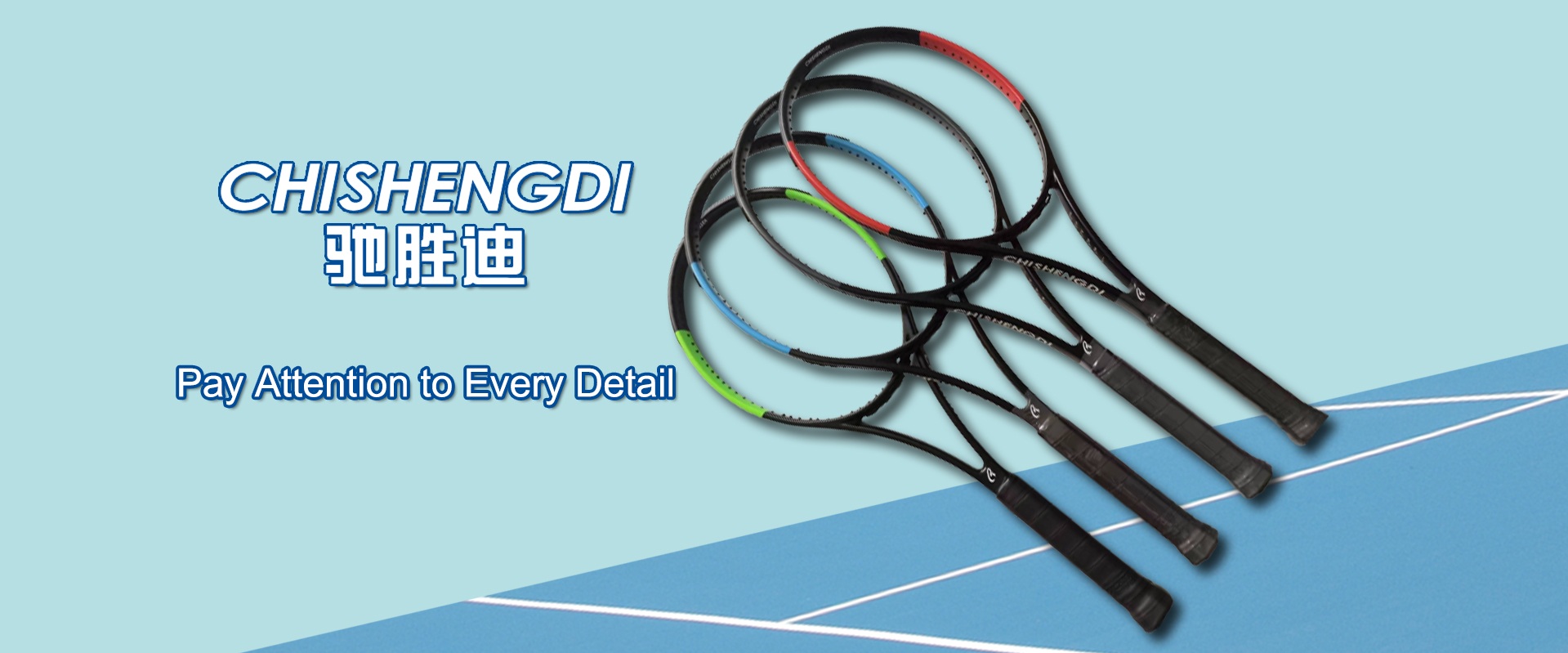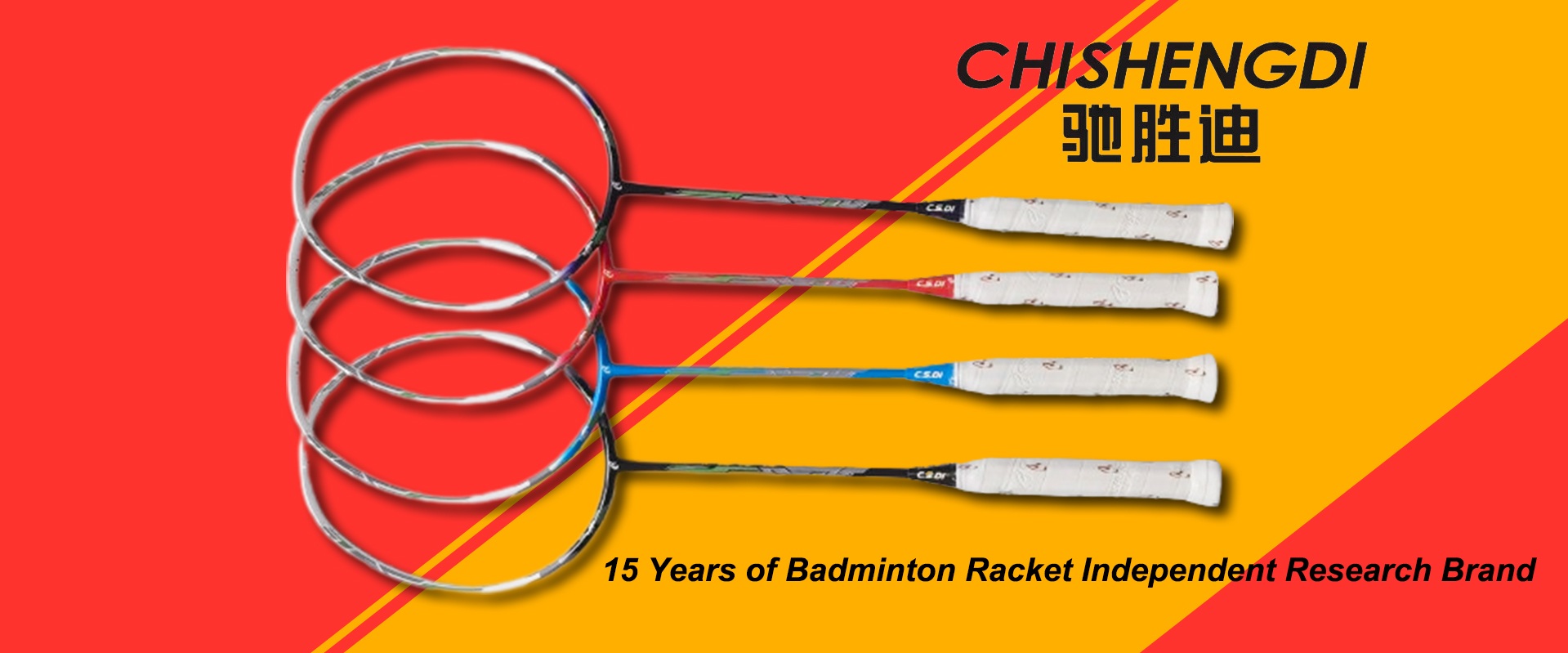+86-13959788969
1. Choose a tennis racket according to your strength and size
Size and strength are important factors to consider when buying a tennis racket. A strong person should choose a racquet that gives you more control because you don't need it as much to provide or increase power output, whereas the opposite is true for a weaker person.
So how do you tell if a tennis racket is more about control or more about power? The simple and intuitive way is to look at the width of the racquet frame. The wider the racquet, the more power it gives the user. In other words, a slightly weaker person should prefer a wider racquet, while a strong person should prefer a narrower racquet.
There is a triangle between the racket head and the handle, which is called the "throat". In general, the wider the triangle, the closer it is to an equilateral triangle, the more power it provides (for people with less strength), while the narrower the triangle, the closer it is to a sharp isosceles triangle, the better for control (for people with more strength).
In addition to strength, you have to consider height. People with long arms and a long swing tend to exert more speed and power on the ball, so they can choose a narrower racket for increased control. Shorter people are just the opposite, in addition to a comprehensive consideration of height strength, but also consider the customary swing speed.
2. You used to swing fast or slow?
We usually divide players into three types based on their customary swing speed: fast, slow, and medium in between.
If you don't know what type you are, ask a coach to watch your swing and help you locate it. In general, the faster you swing, the more power you generate, so you need the racket to give you more control than power, so you may be better suited to a racket with a narrower frame. On the other hand, people with slow swings are better suited to rackets with wider frames.
3. About the racket face, weight, length, balance and hardness
The difference between the racket mentioned above mainly lies in the width and narrowness of the racket frame, which is superficial and intuitive, and more convenient for the quick introduction of tennis "little white". But when it comes to choosing a tennis racket, we can't get around the technical parameters, and I'll try to make it plain.
Racket face area: Usually between 95 and 110 square inches, the big head racket has a larger sweet area and is more fault-tolerant, making it easier to hit a snap strike. Therefore, I suggest that novices try to choose a racquet with a larger racquet face and change to a racquet with a smaller racquet face when their ball-handling ability improves.
Racket length: Usually between 27 and 29 inches. In general, the long racket is more difficult to control, but helps to improve the serve more (because the point is higher and more powerful). Therefore, it is not recommended that beginners buy rackets longer than 28 inches. Once you have some control over the ball, if you want to improve your serve, consider a longer racquet.
Racket weight: racket weight is one of the important reference factors to choose a racket, it has a great impact on your swing feeling, and the same racket will generally launch a different weight racket, so that you can choose a racket suitable for your own weight in your favorite model. For beginners with less power, it is recommended to start with a lighter racket (under 310g for boys and 300g for girls). Because before the movement is not fixed, do not develop the correct swing habits, heavy racquet is more likely to lead to wrist and elbow injuries.
Racket balance: Depending on personal habits and style, it is often difficult to pinpoint. Simply put, a racket with a light head is easier to manipulate and exert control, while a racket with a heavy head is better for power. My personal experience is that a novice can try a light head racket first, then try a heavy head racket after a while, and then decide according to what you feel. As for how to determine whether the racket head light or heavy, you can look at the parameters on the racket, do not want to spend brain to understand directly to ask the coach.
Racket hardness: When hitting a tennis ball, the racket will slightly deform, which will affect the comfort of the player's shot. The harder the racket, the less energy is lost when hitting the ball, but the more impact the wrist and arm receive. Therefore, it is recommended that the novice choose a slightly softer racket. Hardness is also marked on the bat and you don't need to research it, just ask your coach.
4. Easily overlooked point: handle size
Tennis racket handles are divided into 0-5 sizes from thin to thick, with 2 - and 3-size handles being the majority. A simple way to choose a racket handle is to hold the racket with a thick gap between the fingers. Of course, there is also an accurate way to measure the distance from the center of the palm to the tip of the ring finger. Then check the table below to determine which racket handle to choose. My rule of thumb is, when in doubt, go for the smaller # 2 handle, and wrap two layers of sweatbands around it if it feels too thin.










